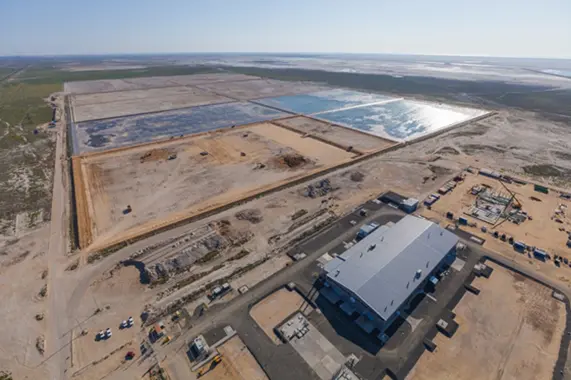
The magic of water recycling: how Tengizchevroil turn wastewater into a resource
Kazakhstan is the heart of the Eurasian continent and this location creates a winning diplomatic and trading position, but also has its downsides. For example, the country does not have its own water resources, since all of the mare transboundary.
That is why water sources are located unevenly throughout the country. For example, East Kazakhstan oblast is a “leader in water resources”, while Atyrau, Kyzylorda and Mangistau oblasts are the driest regions in Kazakhstan.
According to the Ministry of Ecology, at present over a third of the population of Kazakhstan, which is 6,299,299 people, uses imported and well water in their daily lives. The situation may worsen by 2050, when the most part of Kazakhstan will face a water shortage problem.
Tengizchevroil (TCO) understands the importance of water recycling. From 2013 to 2016, water treatment facilities were commissioned. These facilities and new technologies have given hope to Kazakhstan that such an important resource as water would be in no danger.
And what’s there to tell?
TCO has several strategies and one of them is freshwater conservation. This is achieved by treatment and secondary treatment of domestic wastewater through the units like Wastewater Treatment Facility (WTF) and Water Recycling Facility (WRF).
Water is a scarce recourse. We should work together to wisely use each drop of water.

Can you be more specific about this?
We should. This is what happens to the wastewater that is collected from all Tengiz sites at the WTF: pre-treatment, biological treatment and post-treatment.
Pre- treatment is a sector, where water is mechanically treated to remove large and small particles of sand, oil and fats.
Biological treatment is an important stage, where water in bioreactors is cleaned of biological contamination, including microorganisms, nitrogen and phosphorous substances.
Post-treatment is the stage, where water is disinfected and decontaminated and brought up to the standards and requirements of the Kazakhstani legislation.
This concludes the water treatment process at the WTF. In short, WTF collects, purifies and decontaminates wastewater that meets the legislative requirements of the Republic of Kazakhstan.
Secondary treatment of the wastewater takes place at the WRF via reverse osmosis. That is how they obtain technical water, which is used for the needs of TCO’s industry and production.
The reverse osmosis involves the process that pushes water at high pressure through specially designed membranes. This is how water is cleaned of all impurities. Such water is not suitable for drinking but is needed for technical needs of the major enterprise.
With these units and the abovementioned processes TCO has succeeded in purifying 2 MM cubic meters of domestic wastewater per year. And the volume of technical water increased by 1.1 million cubic meters.

What’s all this about?
TCO had no aim to create cost-effective solution. The main impetus was not to increase the water consumption volume from Main Water Conduit, despite the growing number of personnel and increase in production capacity due to the FGP construction. Therefore, TCO has invested huge amounts of resources for WTF and WRF unit’s construction of.
Company’s next aim was to introduce culture of careful attitude to water. These ideas are adhered to not only by TCO, but also by its partners.